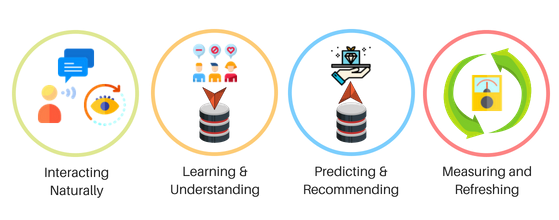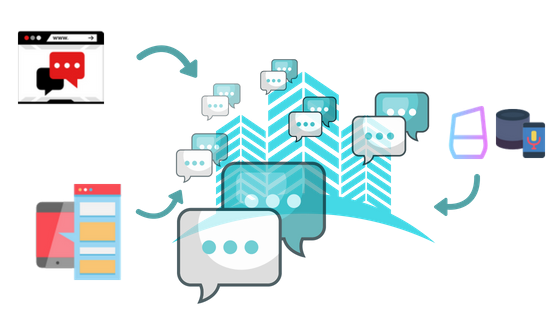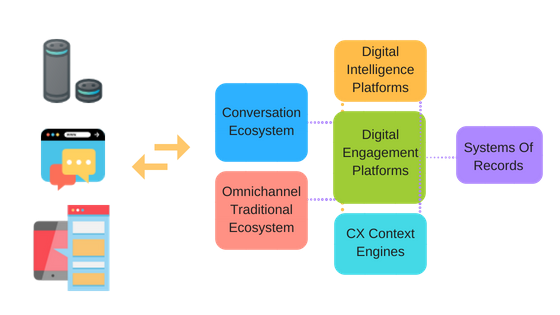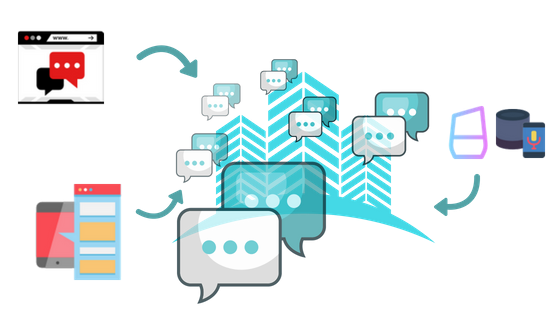Artificial intelligence and conversational user interfaces powering customer experience
Blog: Capgemini CTO Blog
Somebody asked me, “What is the yardstick for an AI-powered customer experience?” I answered, “It is when you don’t realize that it is AI-powered.” We are witnessing a revolution in the customer service industry. AI and cognitive computing are now widely accepted norms when we talk about customer experience. This is possible because of the close collaboration of vendors, defunct standards, API engines, platforms, algorithms, frameworks, computing engines, etc. Owing to these developments and readily available technical resources, we are now able to solve customer problems efficiently while also providing a delightful customer experience. Conversational user interfaces are among the most popular applications of customer experience powered by artificial intelligence.
Understanding conversational user interfaces (CUIs)
Conversational user interfaces (CUIs) such as chatbots, voice assistants, virtual assistants, common chat applications, and embedded conversations have opened the space of minimalistic experiences. What is conversational problem-solving? For better understanding, let’s take a traditional use case of solving a customer problem and reshape the workflow with conversations embedding it with predictive options. This means that instead of a step-by-step process model of workflow execution, we will have a conversational model to arrive at a resolution for the customer. These conversations should also be able to provide recommendations based on the business predictions that will enable the user to take faster decisions. These conversations are powered by artificial intelligence which helps businesses understand customers and their needs in a better way and make effective recommendations.
The conversational user experience looks simple. However, the problem solving is by a series of complex considerations of user and enterprise context, conversation-tree optimization, and the mandatory need to look at all possible data points available, in order to assist the present customer situation in an efficient manner. Artificial intelligence powered implementations amplify the customer experience with more human-like interactions in four areas:
- It enables personalized approaches with natural interactions.
- It correlates the data collected and mines it to understand the customer and the context better.
- It learns the solution patterns based on history and makes recommendations.
- It measures the efficiency of the recommendation provided to the customer and relearns and corrects the system continuously.

The fundamental nature of applications with one set of inputs and one set of possible outputs to solve a problem is now disrupted. With conversations, we are now open to any set of inputs that may lead to any set of outcomes.
One of the benefits of conversational problem solving is that it does not happen in silos, it is multi-modal. This means that the conversation can happen with a context learned across multiple channels. Businesses can also embed resolutions seamlessly, in conversational user interfaces, using historical references to provide personalized responses and recommendations to the customer.

Key concerns in the industry on adoption
One of the key concerns in the industry is the efficiency of the training model that is needed to create a more human-like adaptive experience with these CUIs. There is a worry about the effectiveness of the implementation, i.e., how will we ensure that the transactions are winning customers and not losing them. There are also concerns on the force fitting of AI into many of the conversational contexts. If the business solution is possible with a Q&A type of repository, then we may not need an AI in this scenario. Another aspect of worry is the fragmentation of solutions as there are multiple vendors, avenues, and platforms available. To understand how we can get over these hurdles we may need to set up a solution ecosystem.
Following steps can be taken into consideration for creating a blueprint for a conversational problem-solving ecosystem:
- Conversational ecosystems can exist in parallel to the traditional mobile/web application formats – the omnichannel ecosystem.
- Digital engagement platforms are the primary customer experience platforms, such as websites, apps, social platforms, marketing channels, etc., where the customer engages with your business or brand.
- Digital intelligence platforms are the AI/cognitive platforms that can be within or outside the customer experience platforms providing the necessary intelligence for the workflow (the learning and predicting aspects).
- The critical aspect is the context of the customer, the engine needs to understand the customer better during the interaction and feed raw data to the digital intelligence platform and the engagement platforms.
The next-generation customer experience will be enabled by a cohesive system of accumulated customer interactions across multiple touchpoints and intelligent systems.

One of the ways to overcome some of these key concerns is by implementing a continuous refresh model. With this kind of model, we will be continuously training the system to accommodate new scenarios. There should also be a performance analysis model that will oversee the transactions so that we will have deeper insights into the efficiency of the conversation outcomes. Artificial intelligence will ultimately add value. It will help the system learn efficiently on the fly and accommodate the scenarios back into core solutions and refresh them.
Omni-channel is being rediscovered. Newer interfaces like conversational extensions in apps or devices are being experimented with and accepted. Artificial intelligence and the interfaces powered with it will open a wide range of options to solve business problems. At Capgemini, we help our clients create conversations with their clients that will help them make a difference.
Leave a Comment
You must be logged in to post a comment.








